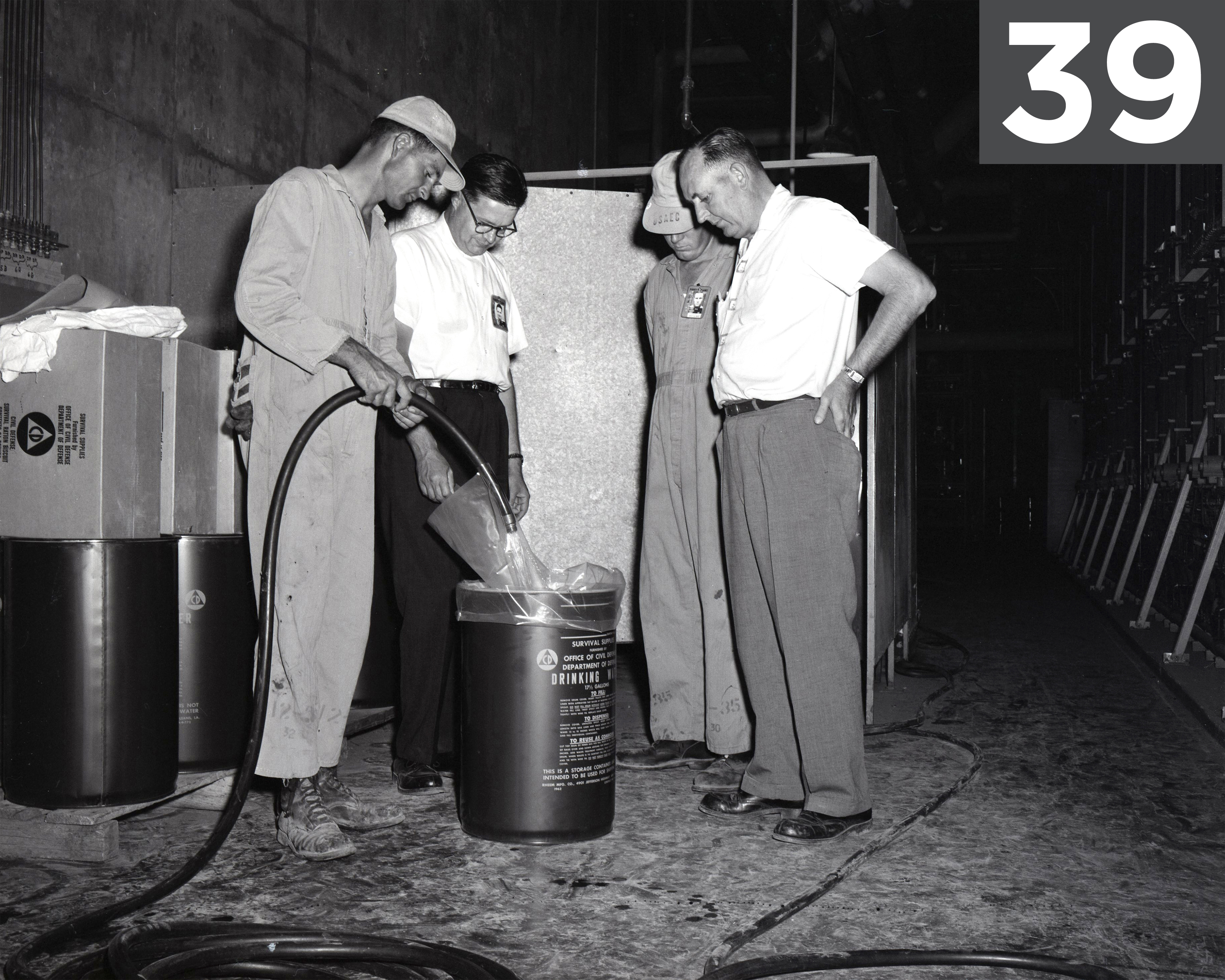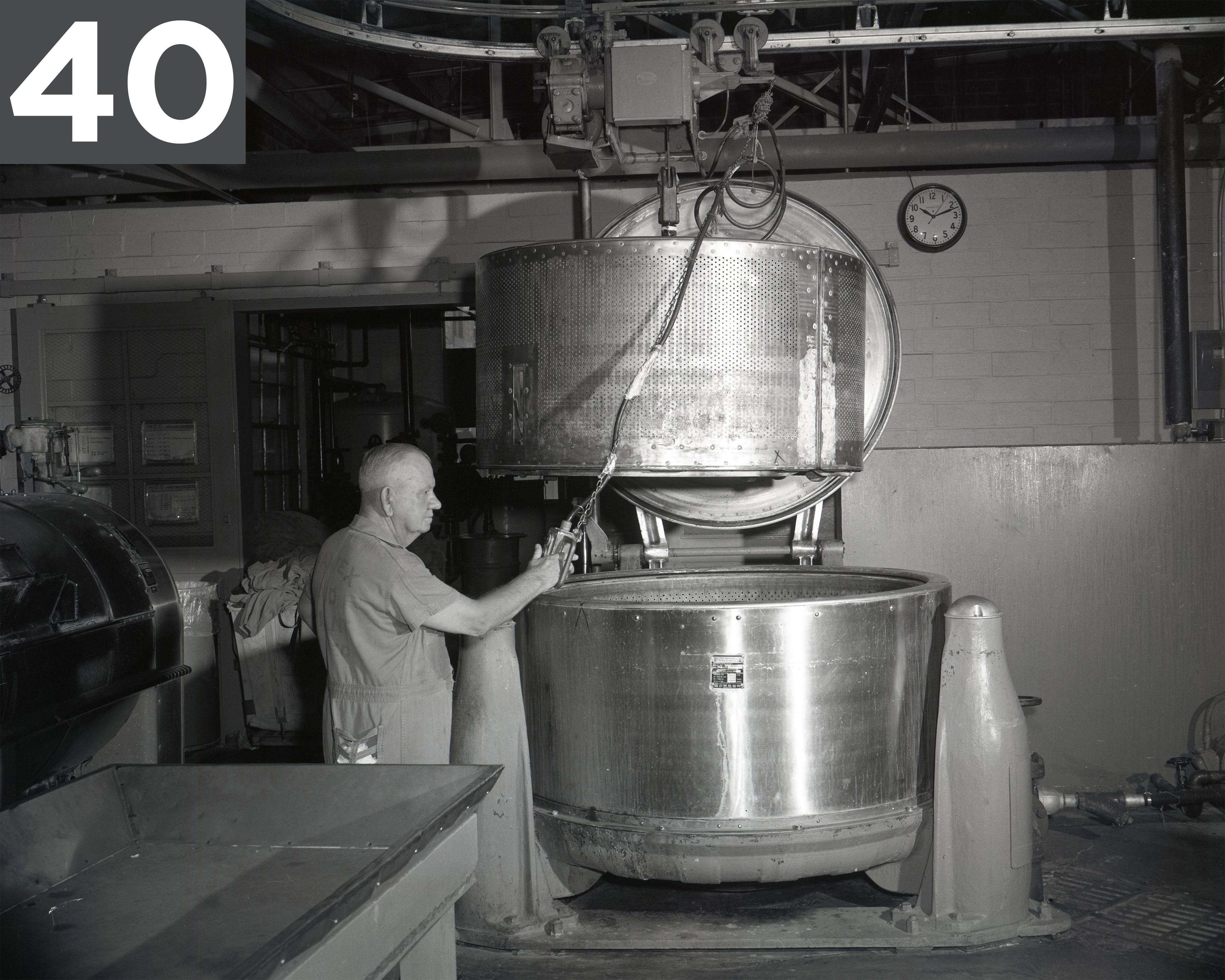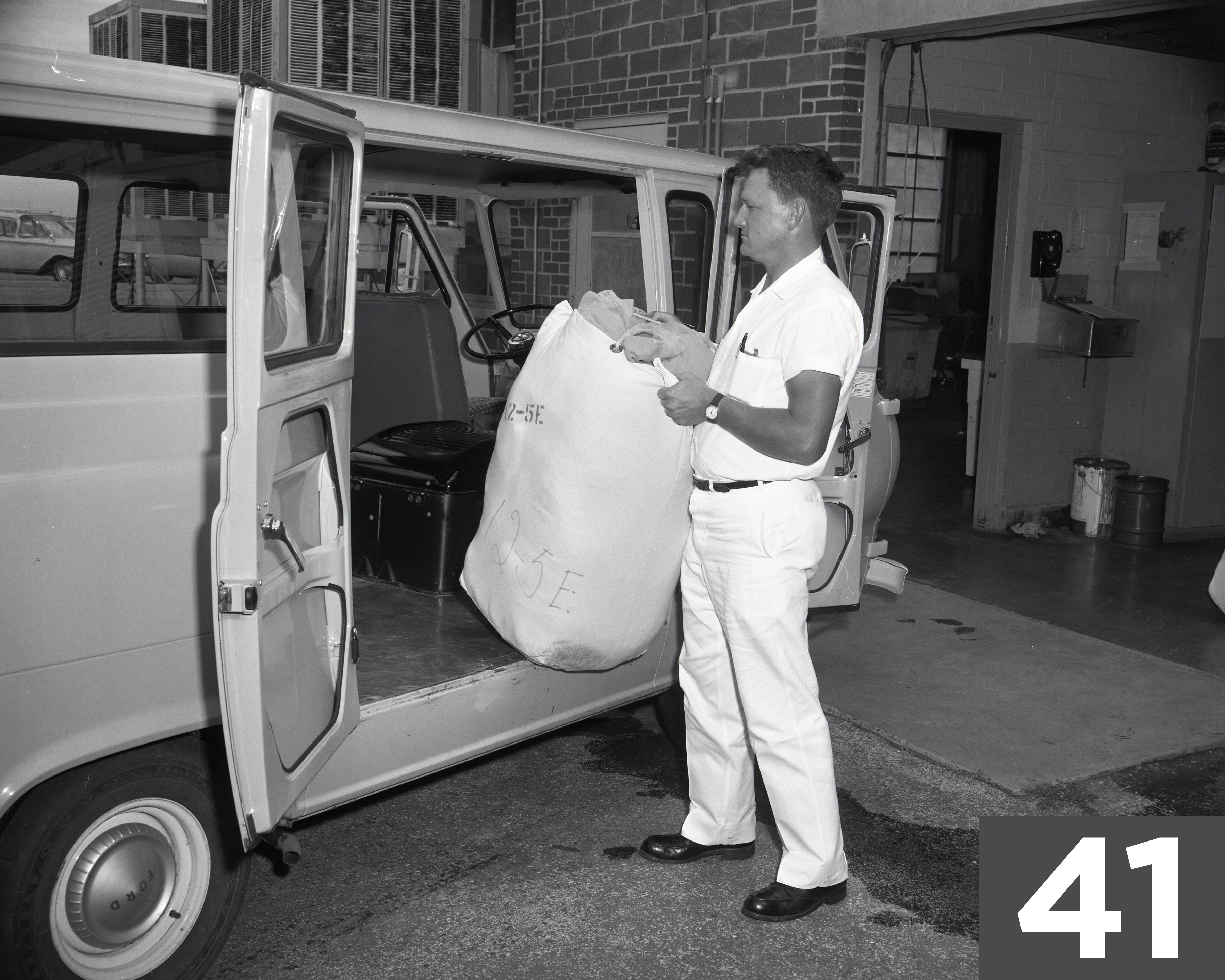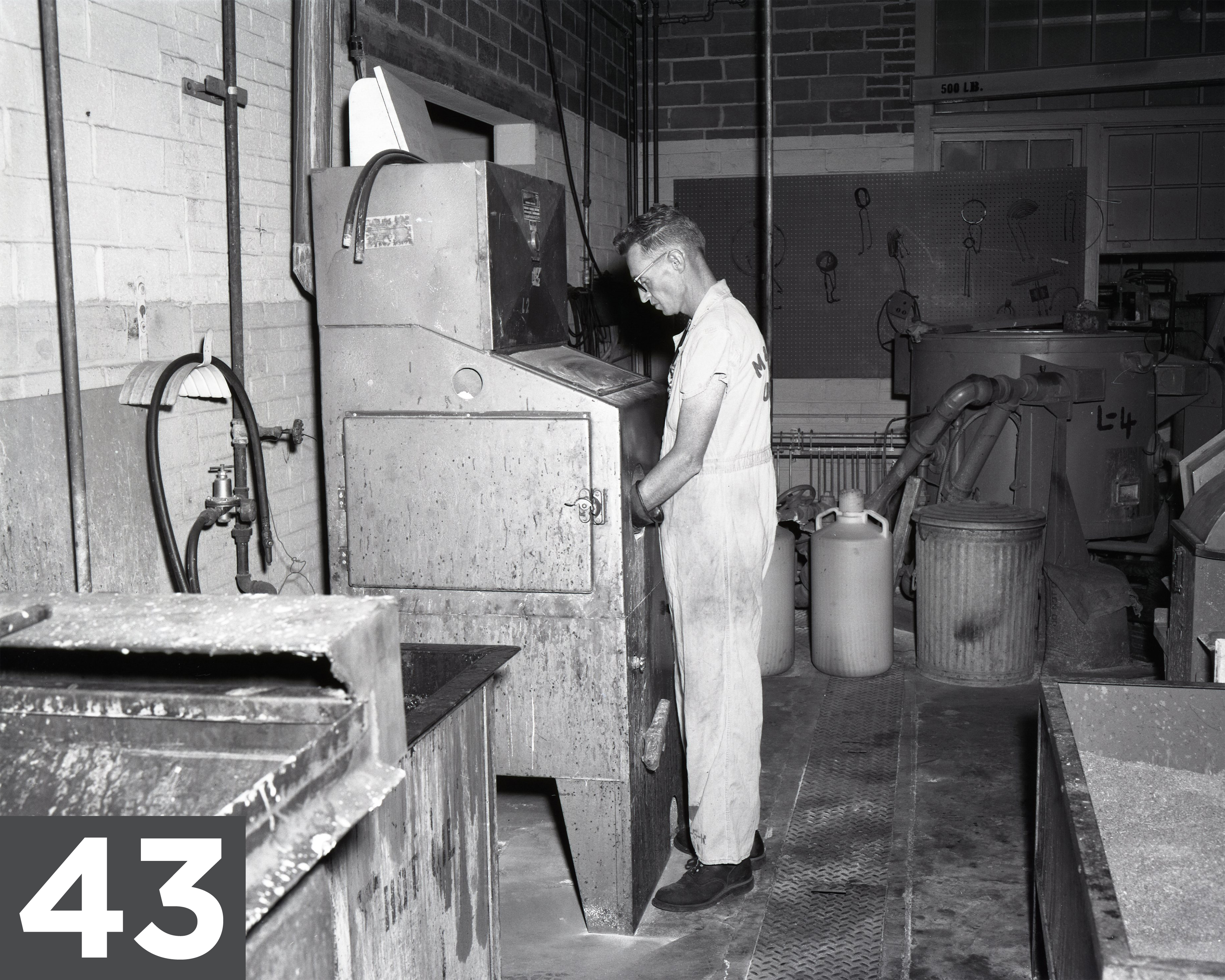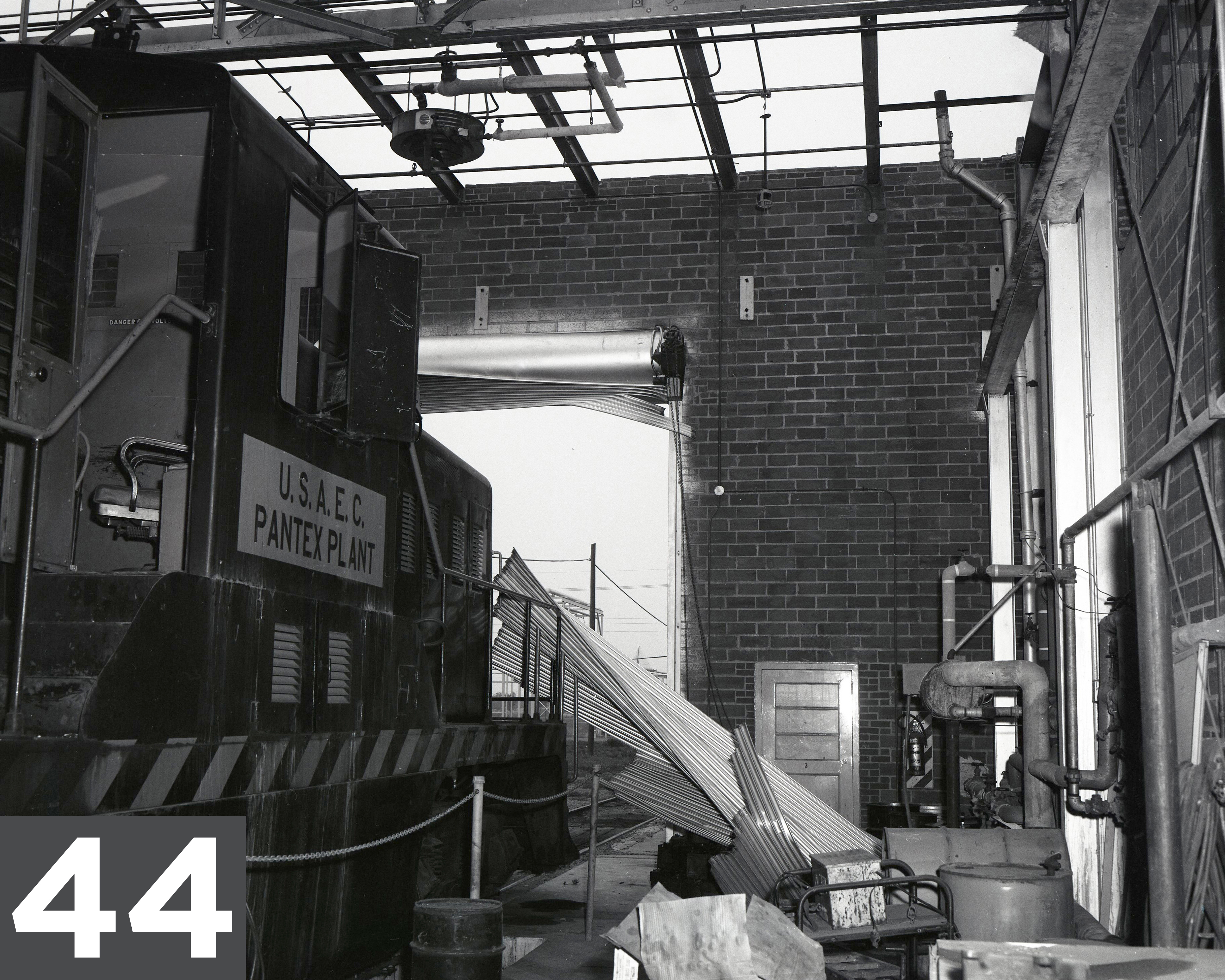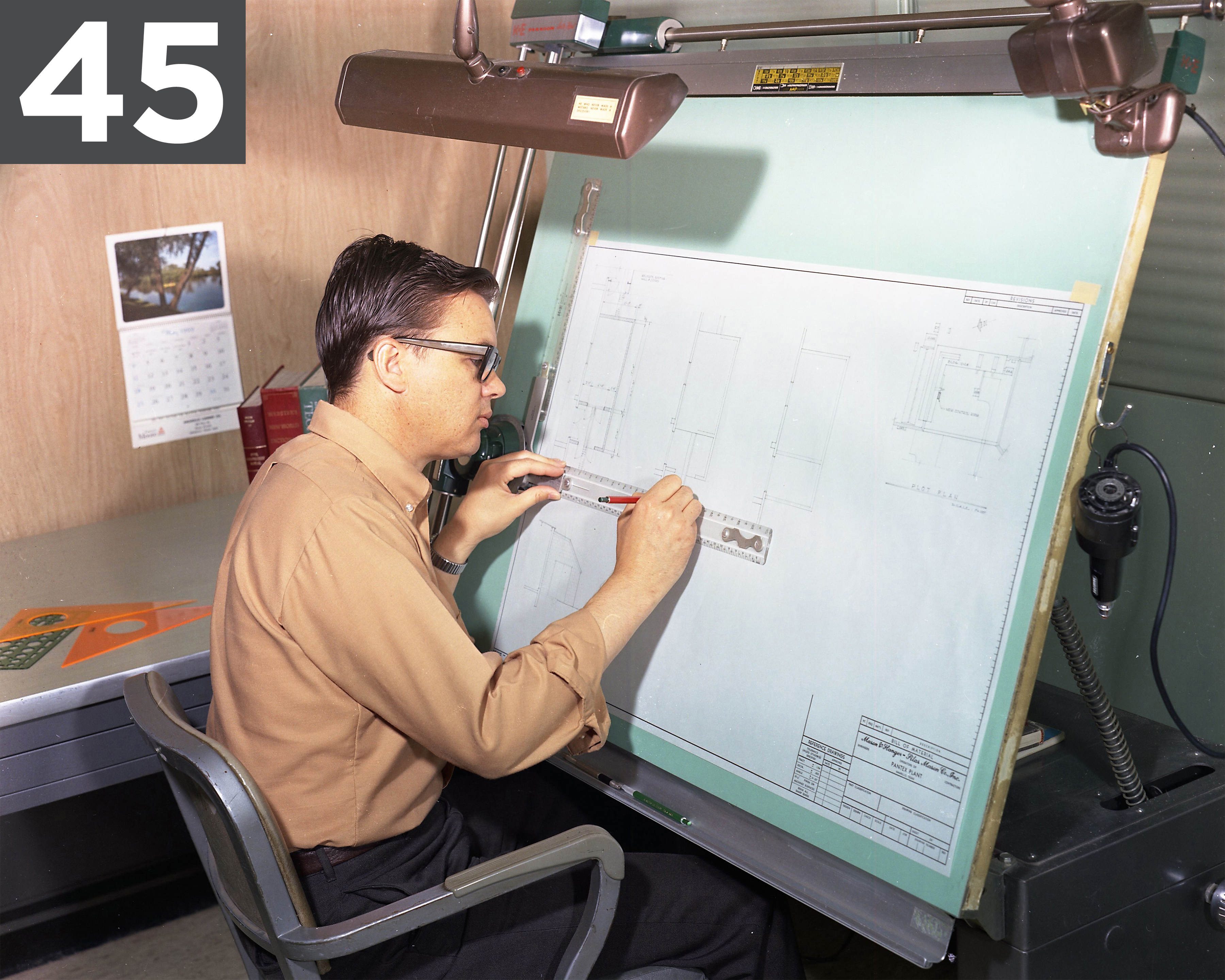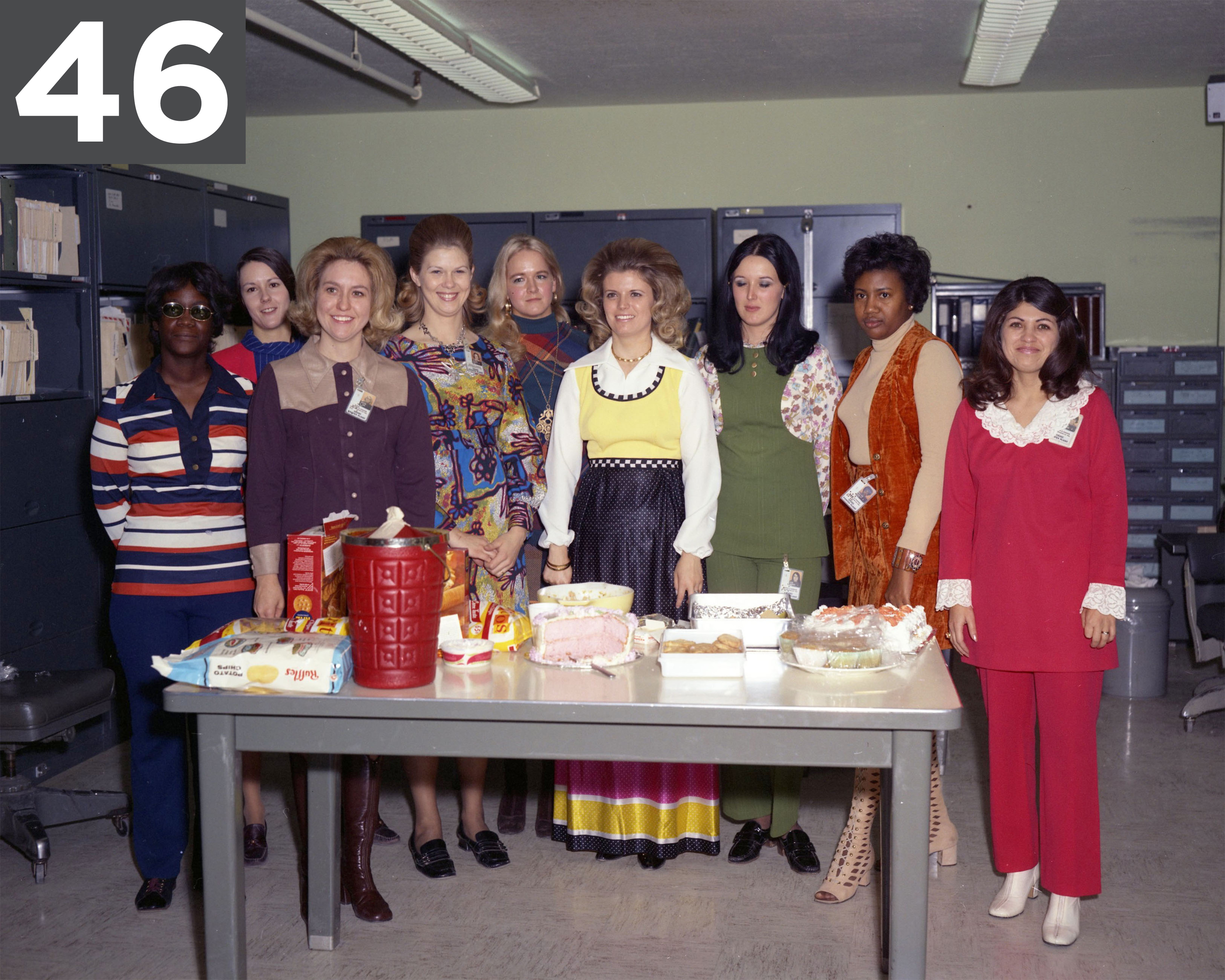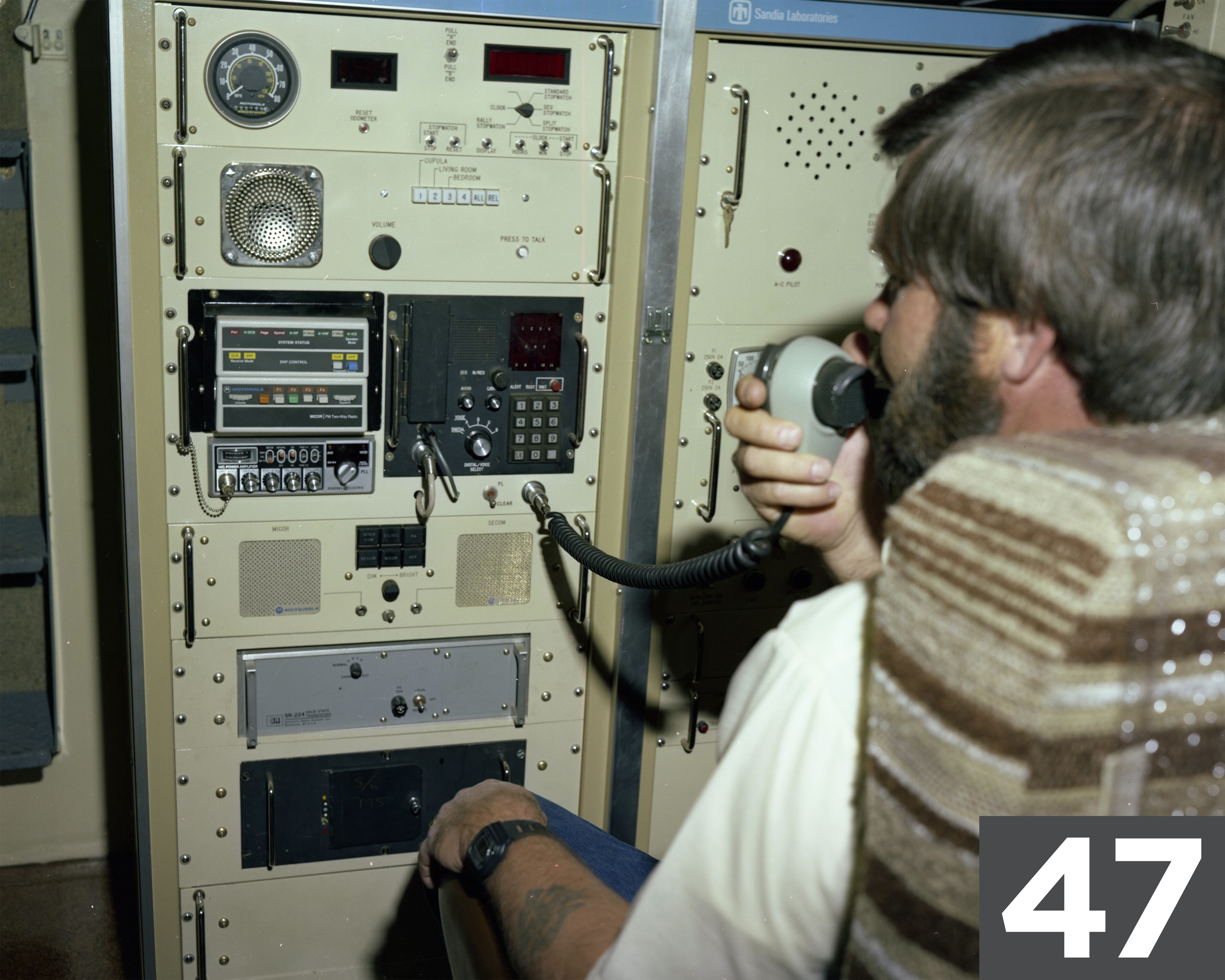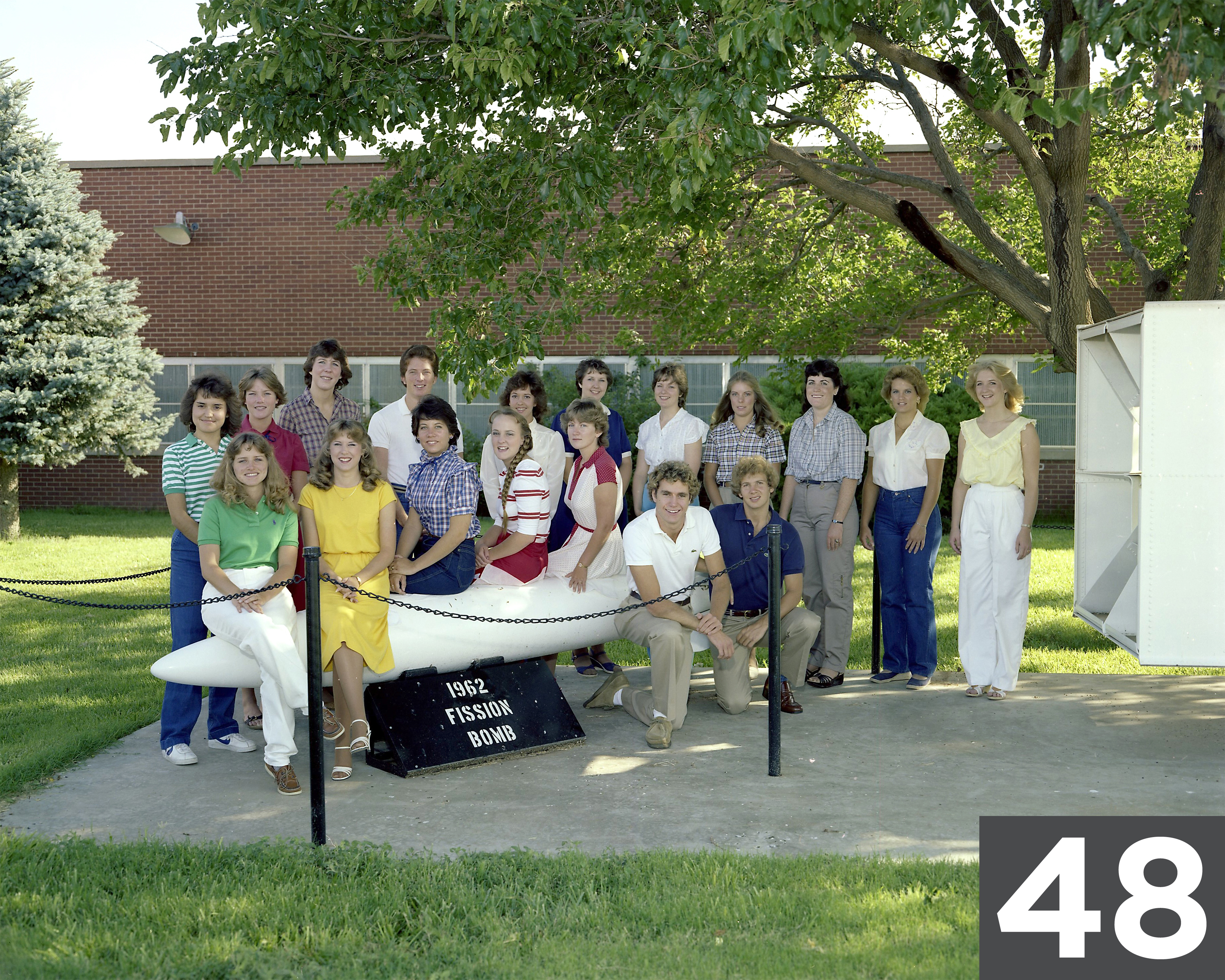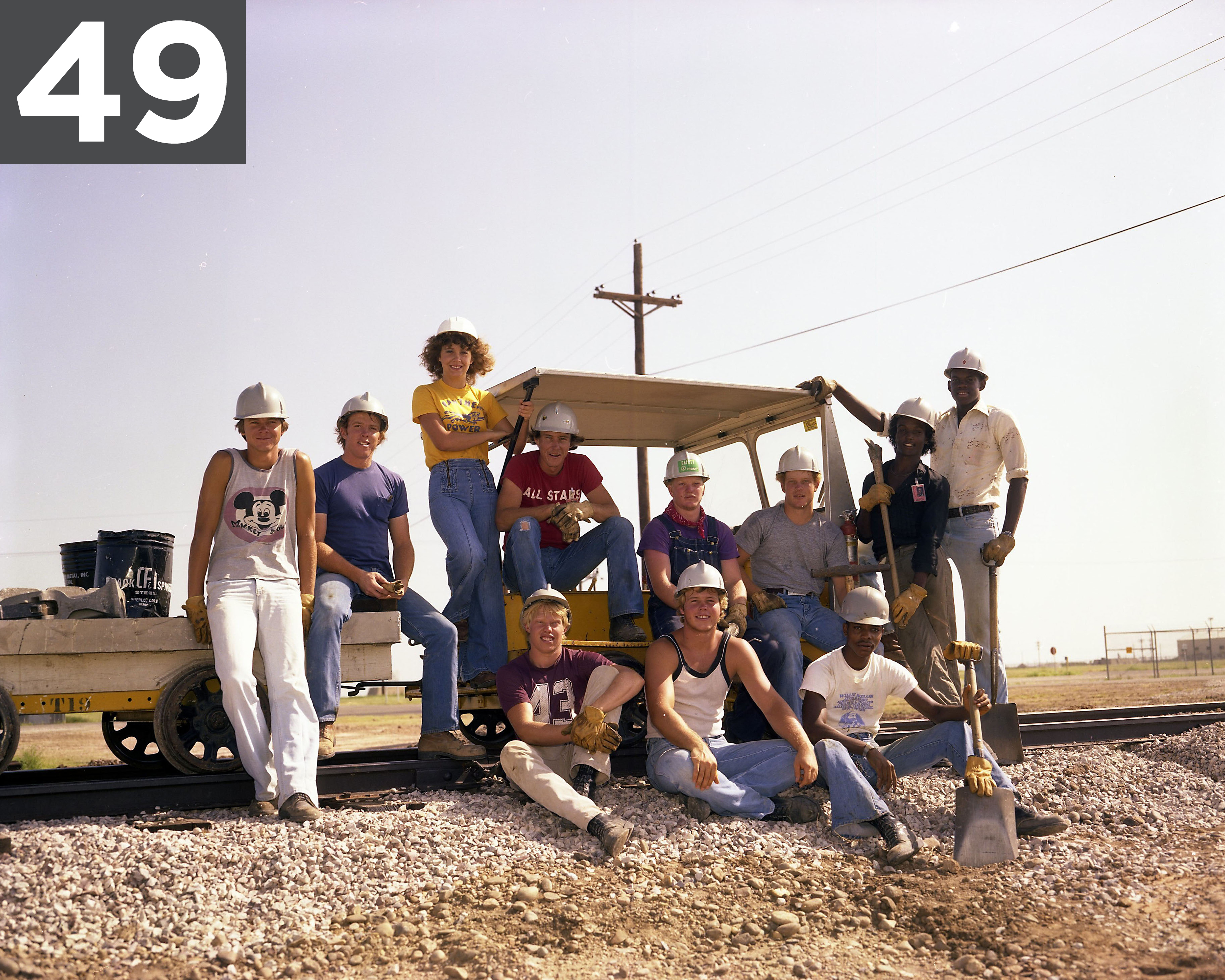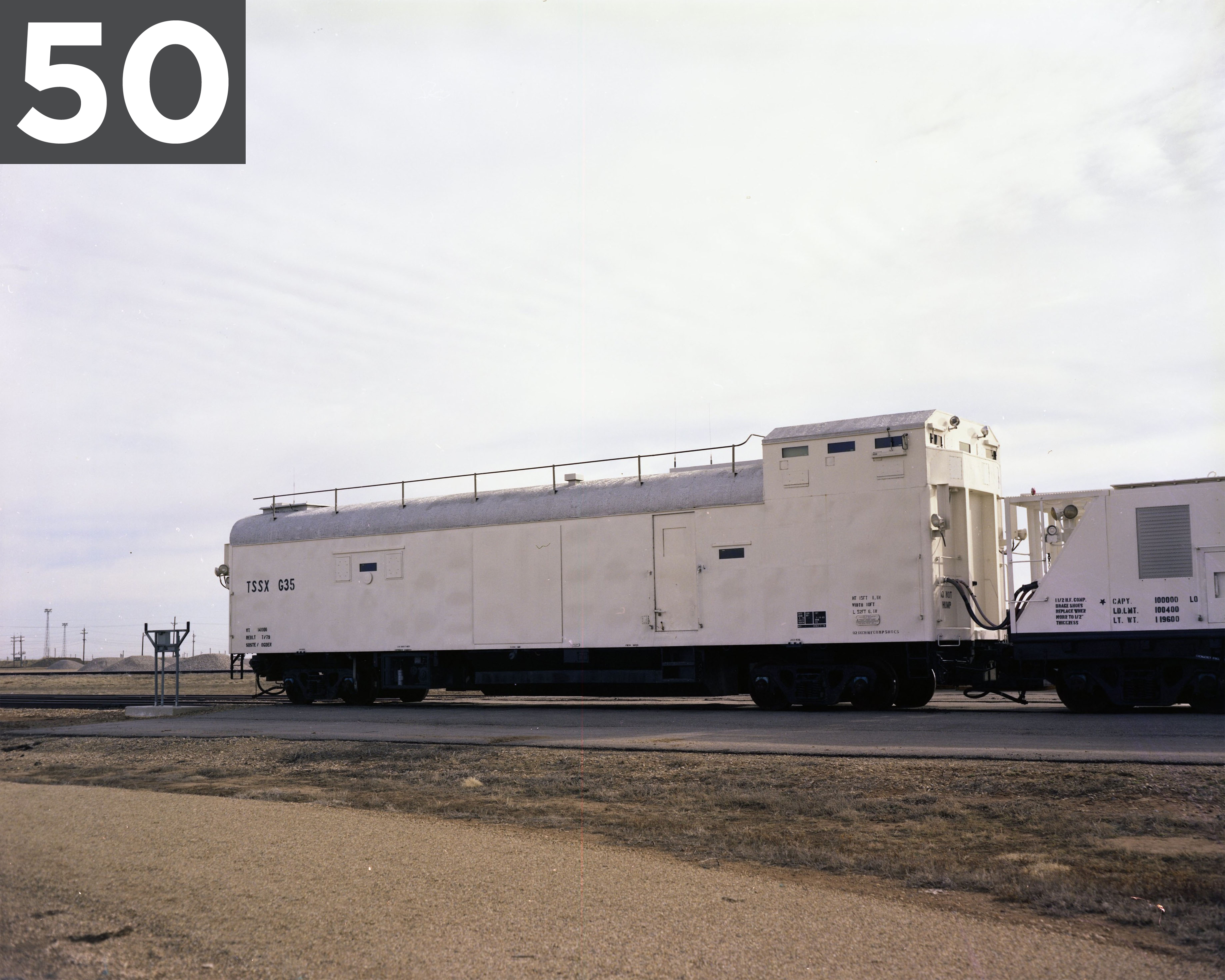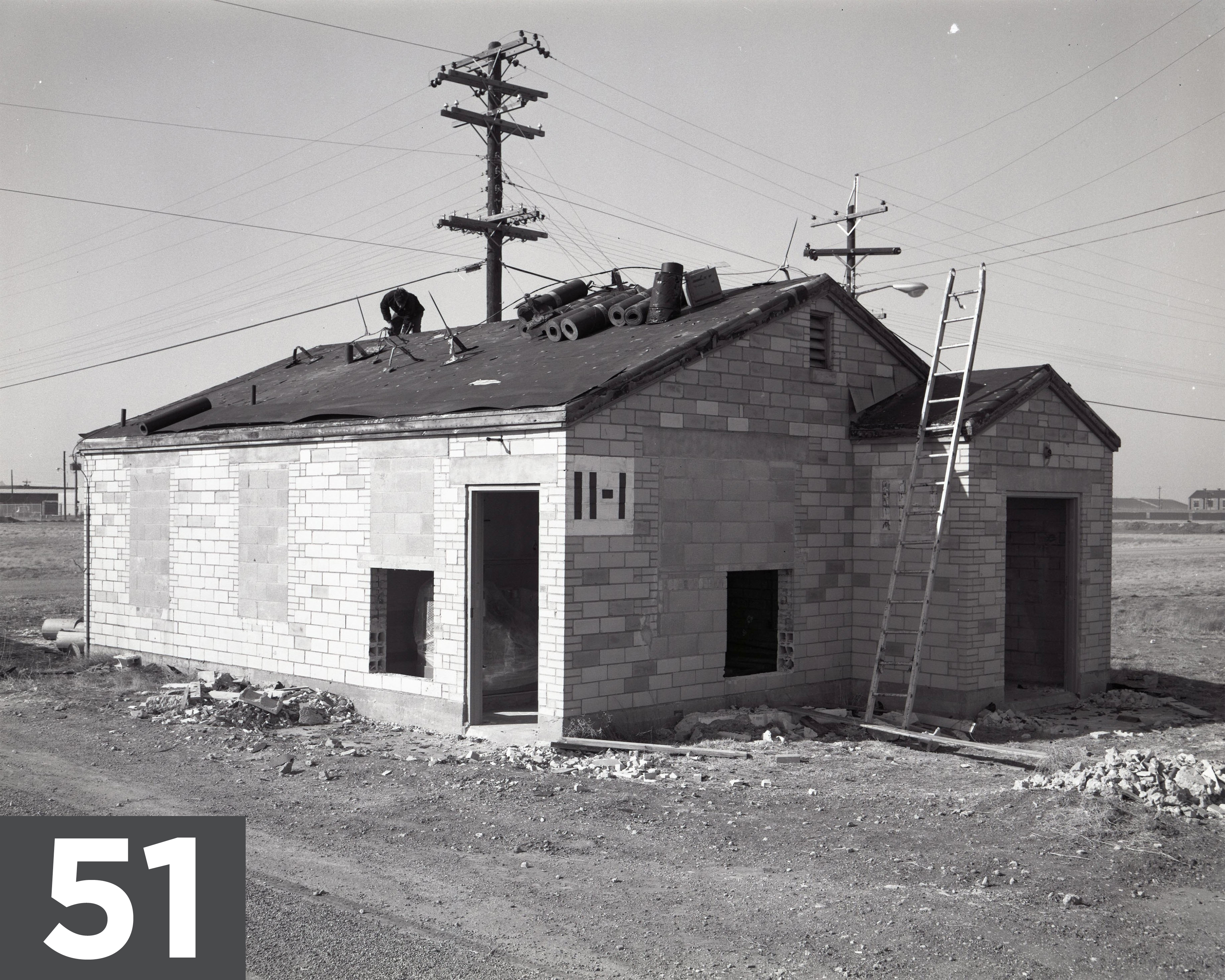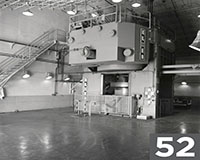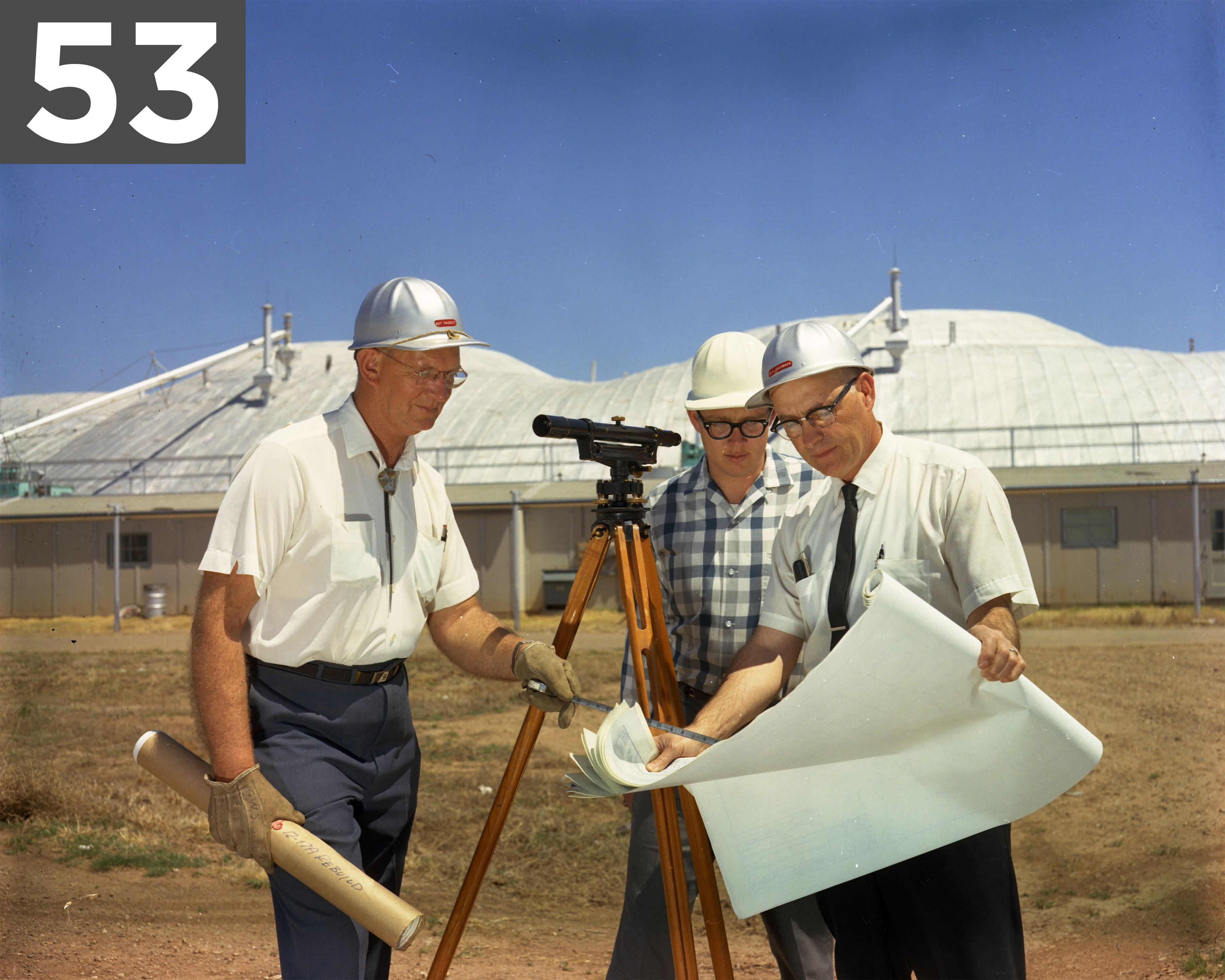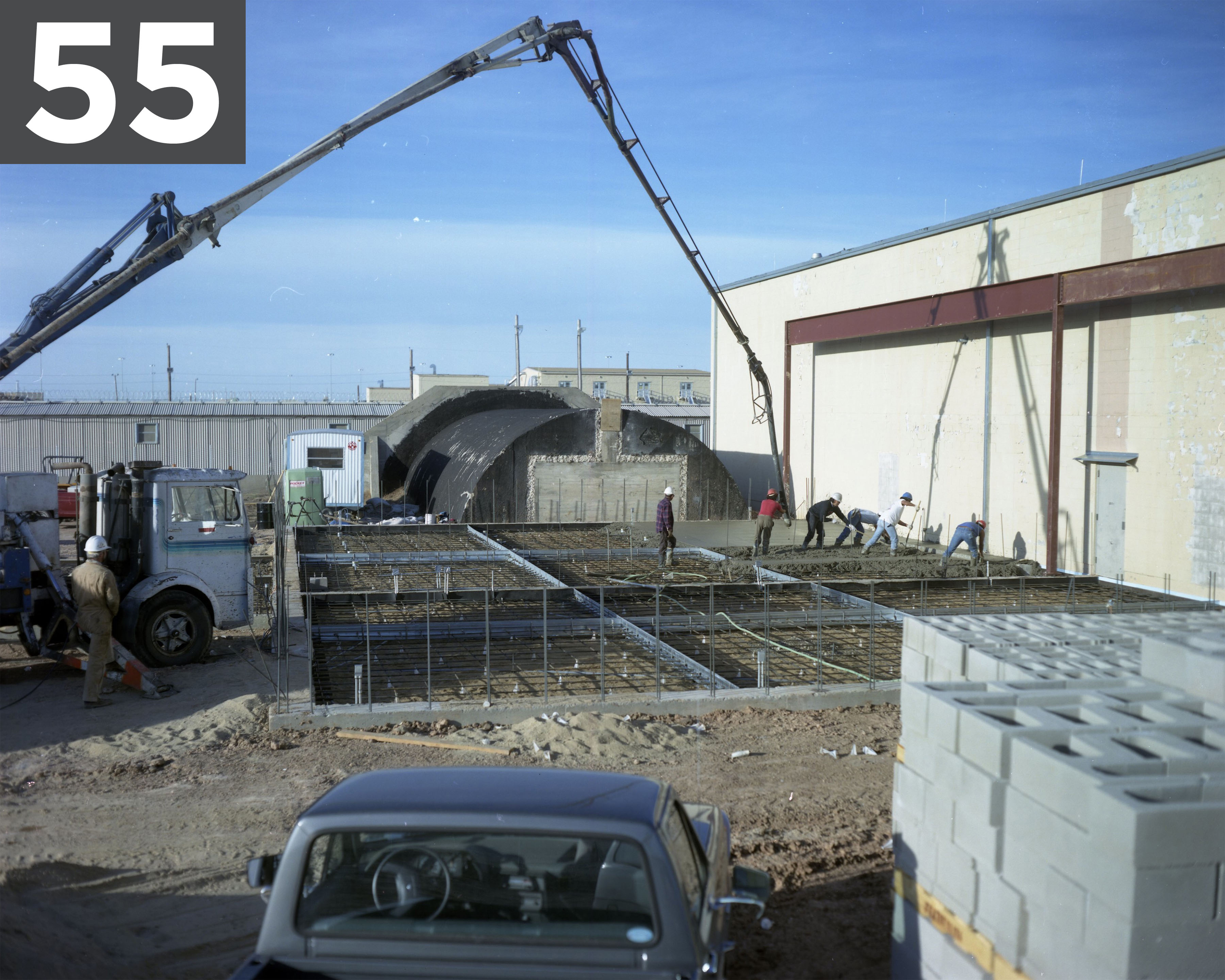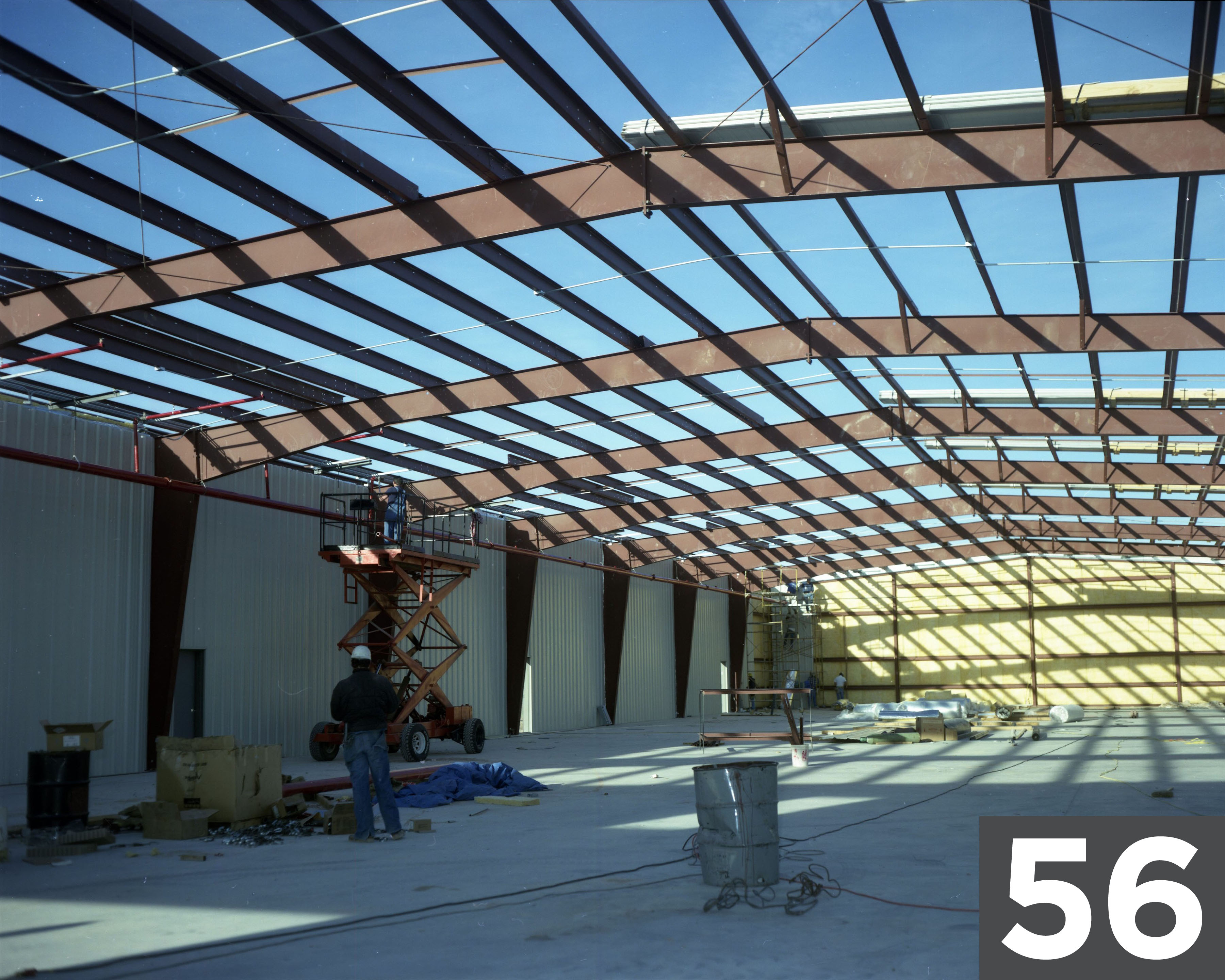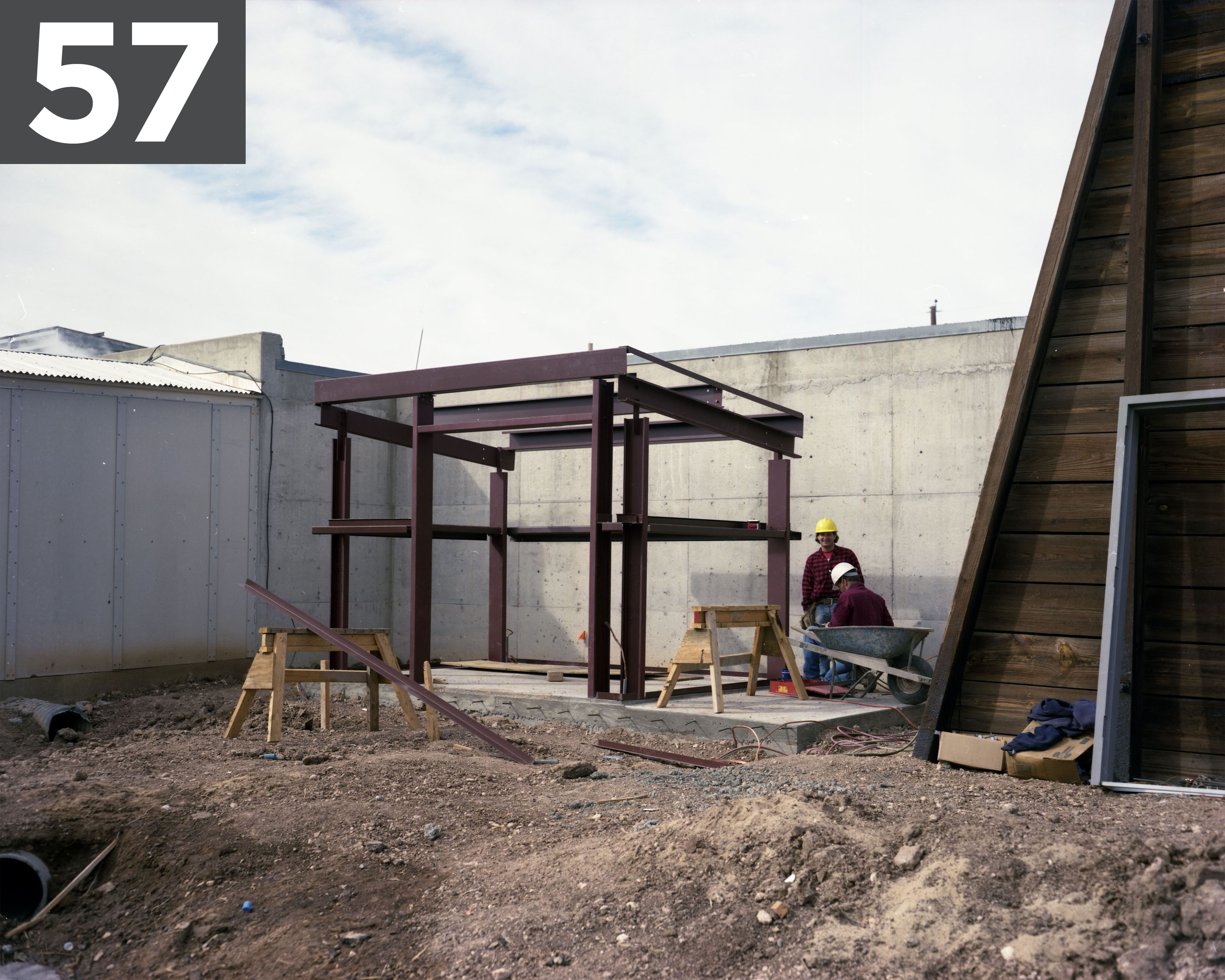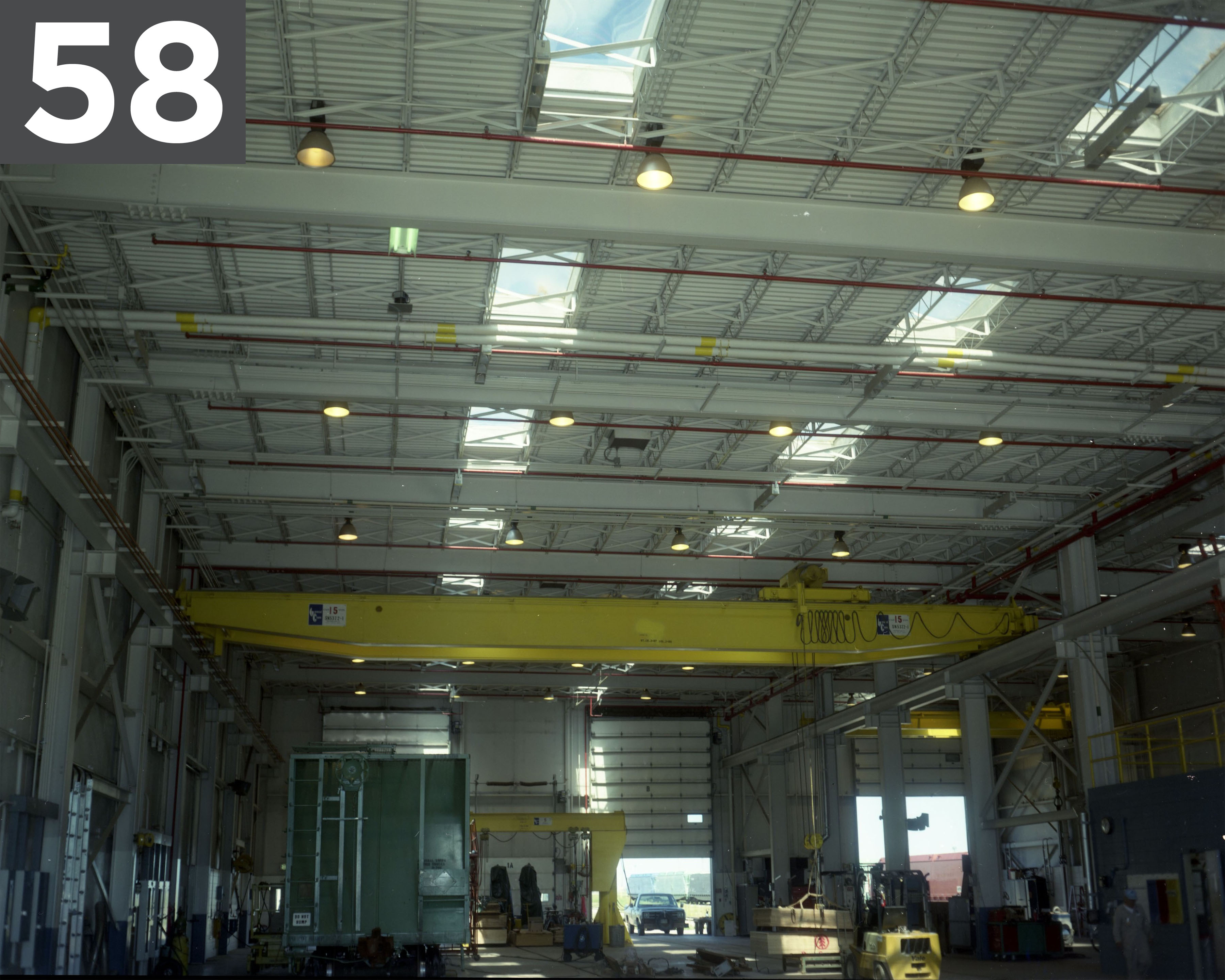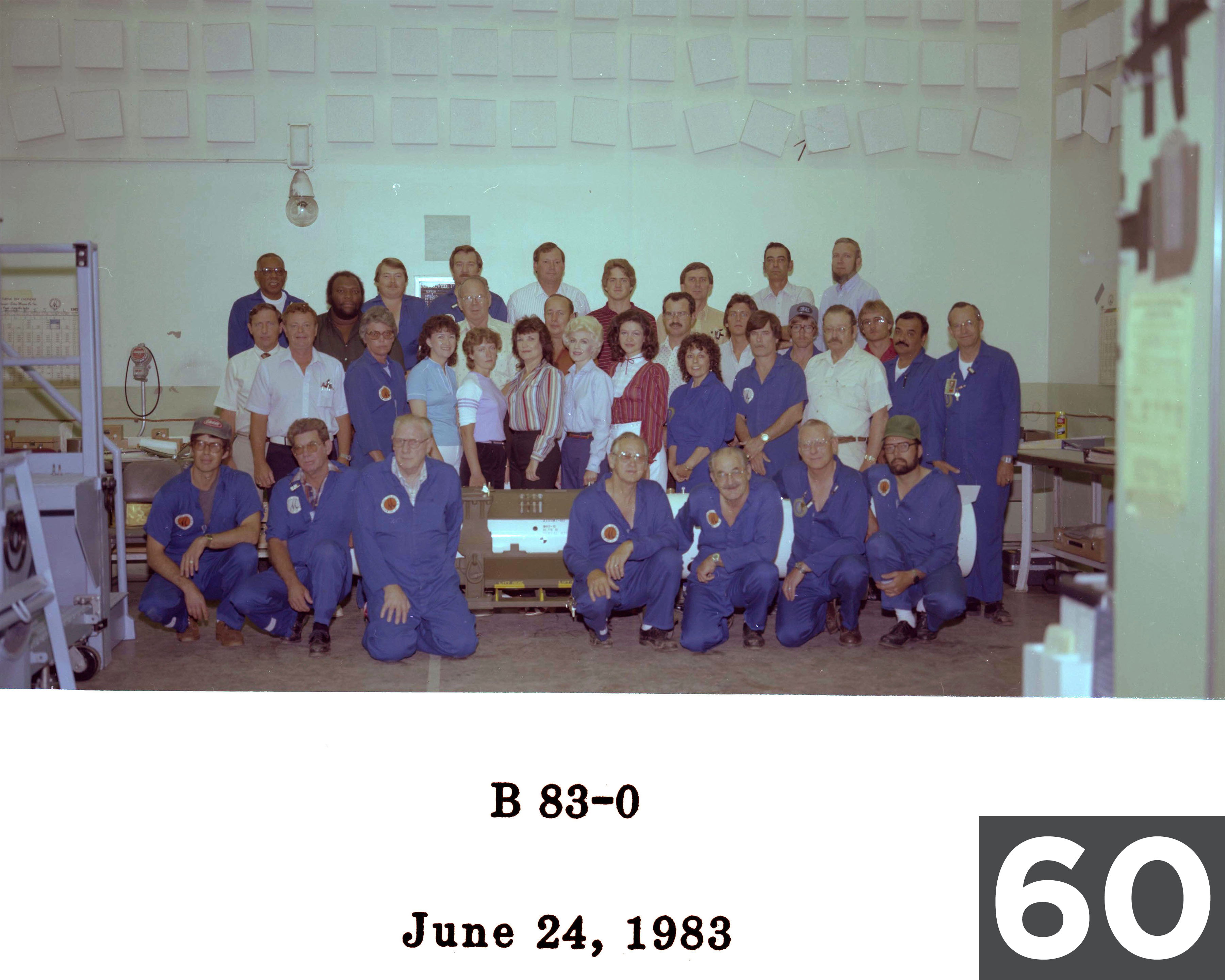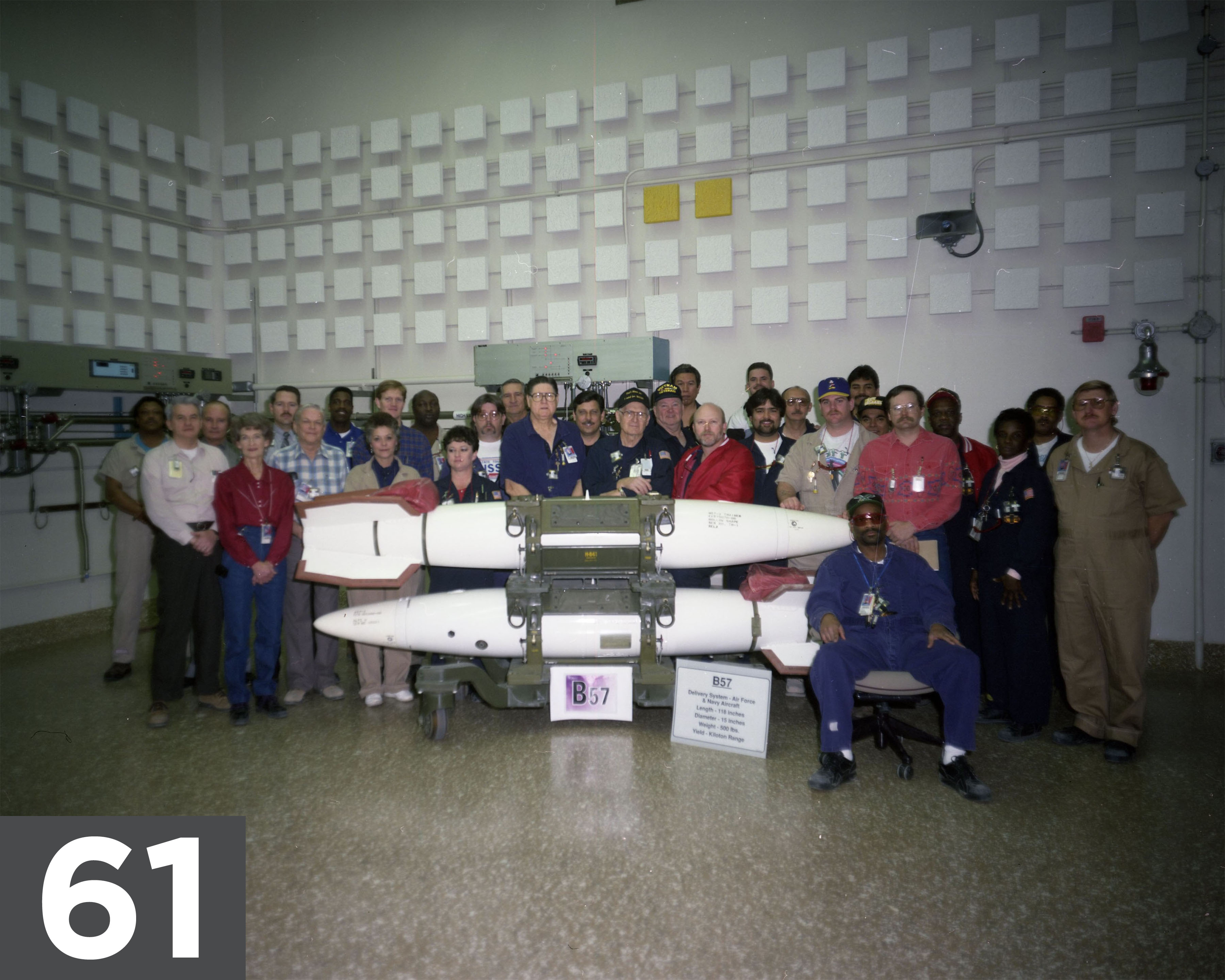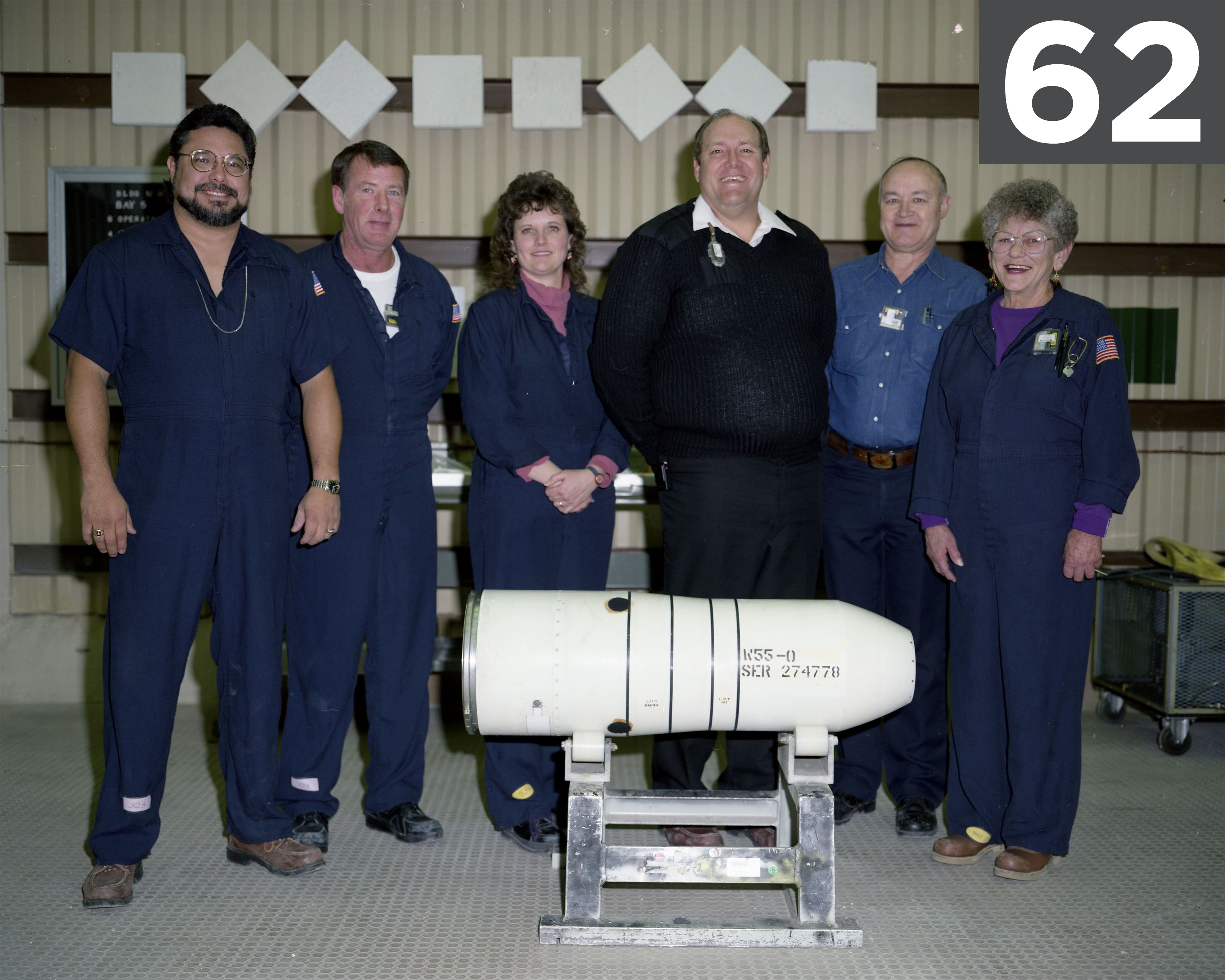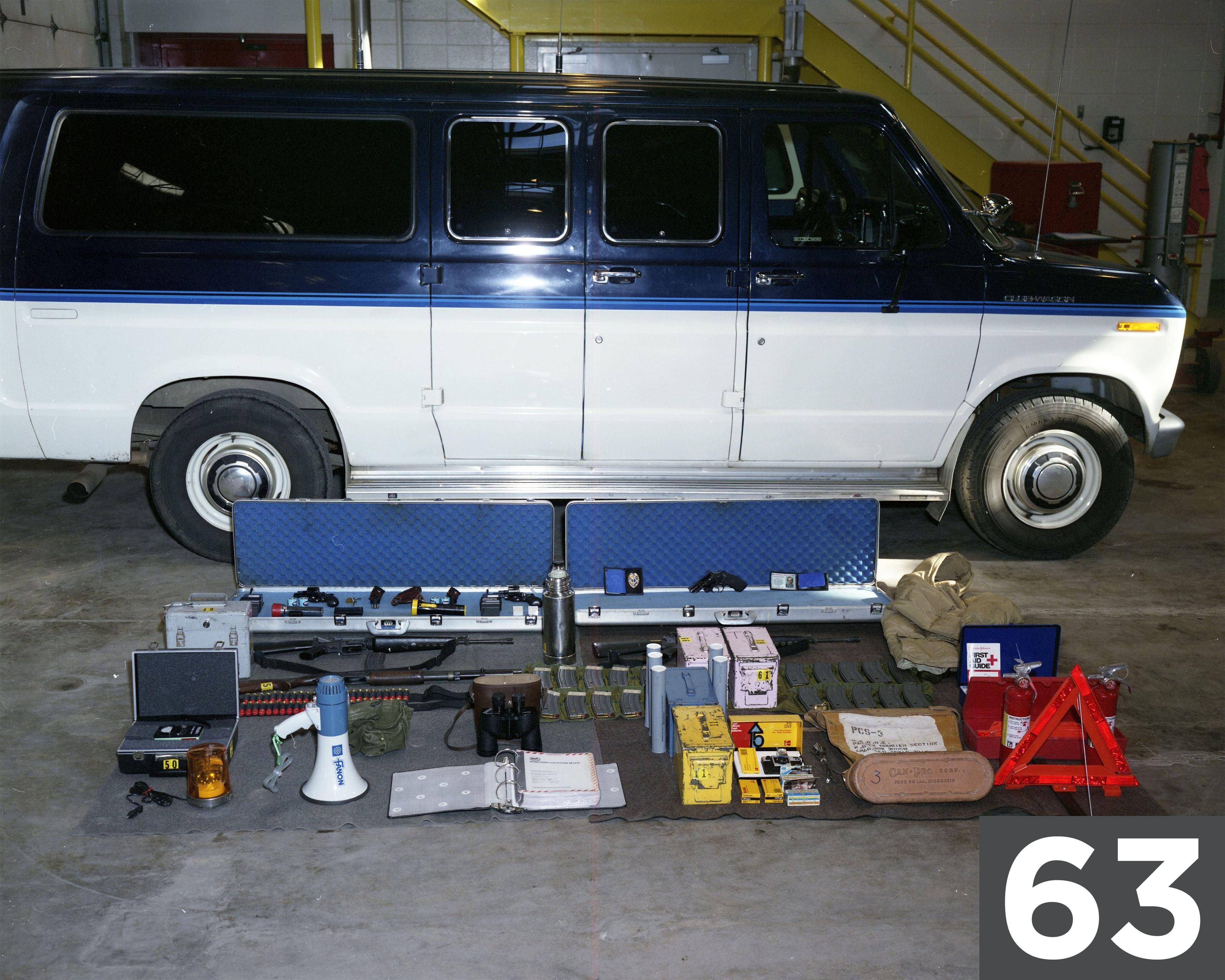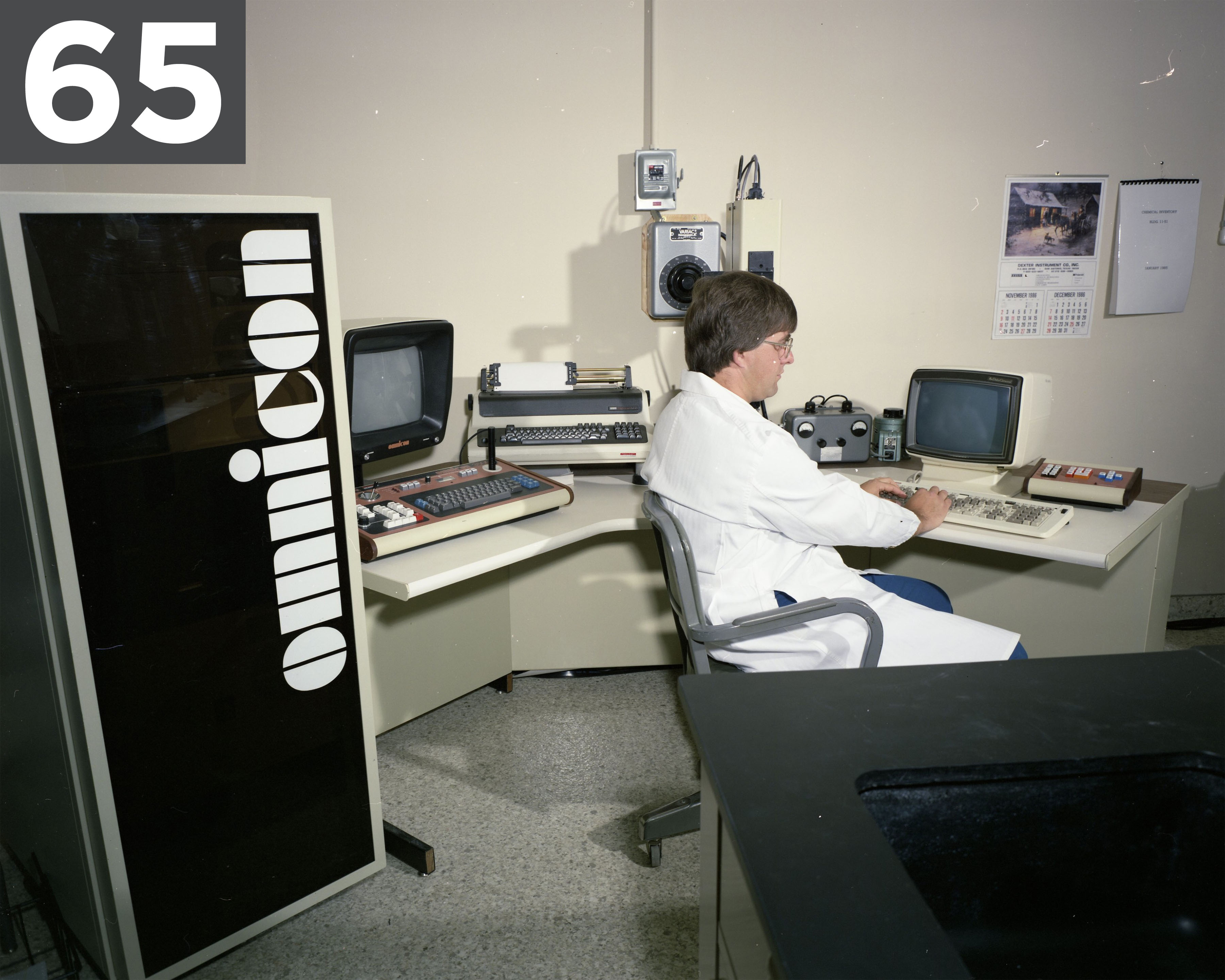Infrastructure for Innovation
Pantex buildings and infrastructure were originally built to support the nation during World War II. Then, major upgrades and expansions took place throughout the Cold War era. Modern buildings create a smaller, more efficient footprint while bringing cutting-edge technologies for mission enhancement in security, weapons assembly/disassembly, materials, and manufacturing.
See our History brochure for photo information.
A deeper dive into the history of infrastructure
Building for the future of high explosives excellence
For the past 78 years, High Explosives (HE) has been a major component of the Pantex mission – from making conventional bombs for the U.S. Army in World War II to manufacturing HE and HE components for modern nuclear weapons. In recognition of Pantex’s long history of fulfilling the HE needs of our nation’s nuclear security mission, the National Nuclear Security Administration (NNSA) designated Pantex the HE Center of Excellence for Manufacturing. Due to increasing demand for new HE for multiple nuclear weapons refurbishments programs and the aging infrastructure of Pantex’s HE manufacturing facilities, NNSA and Pantex determined the site’s capacity for HE manufacturing must be strategically increased through infrastructure modernization. NNSA is supporting the HE manufacturing needs at Pantex with congressionally allocated funding, while Pantex is managing the design and construction.
Three new buildings are either in the design or construction phase in support of this long-term vision becoming a reality. All three of these buildings will support the manufacturing of high explosives, but each will have a unique purpose in doing so. The HE Science and Engineering (HESE) Facility, Advanced Fabrication Facility (AFF), and HE Synthesis, Formulation & Production Facility (HESFP) will serve as the new homes for most HE-related activities.
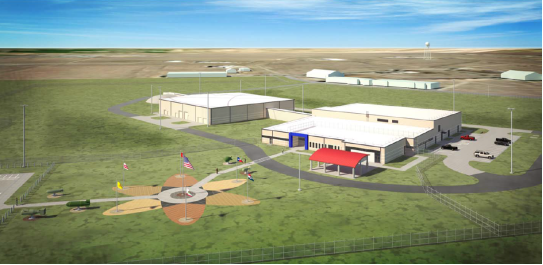
High Explosives Science and Engineering Facility
“The HESE will consolidate HE testing and qualification, meaning testing that is done to prove the HE has met all safety, quality, and performance criteria to be ‘qualified’ for use in a nuclear weapon. These events, which previously happened in multiple World War II-era facilities, will now take place in a modern laboratory environment. This building will also contain development space for equipment and instrumentation that either currently resides in Pantex Special Nuclear Materials operations or will be instituted in the future,” said Explosives Technology Operations Senior Director Monty Cates.
“The AFF will consolidate subtractive and additive machining of fixtures and test fire assemblies into a sustainable, modern facility,” said Cates. “To further explain, this building will allow for things such as obtaining a final object shape through the cutting away of excess materials or by 3-D printing, which means the final shape is acquired through a layer-by-layer build up.”
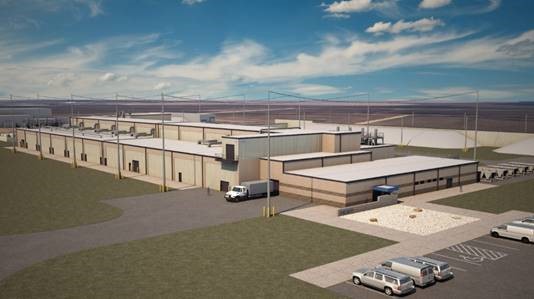
High Explosives Synthesis, Formulation & Production Facility
“The HESFP will establish the capacity for full-scale production for high explosives, and this will allow the NNSA to be independent of external suppliers for all high explosives in the nuclear weapons stockpile,” he said.
In addition to the aspect of modernization, these facilities will benefit Pantexans personally. The creation of new buildings will also sustain and may create job opportunities, will provide an even safer environment for Pantexans to work in, and potentially will enhance employees’ desire to contribute further to the mission of Pantex.
Some returns on investment for this modernization will be lower maintenance costs, energy savings, and an increased productivity due to consolidating operations that would typically take place in several different buildings. Although these issues being solved are of great importance, there is one that exceeds them all.
“The general public can rest assured that Pantex is moving forward with these new HE buildings to ensure the global security mission, through a credible nuclear deterrent, will endure and continue keeping our families, friends, nation and allies safe from those that would do us harm,” said Cates.
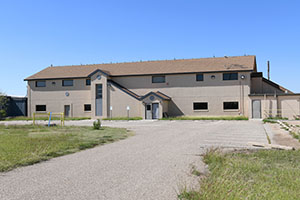
Old HE Building, 11-2
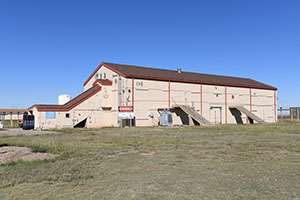
Old HE Building, 11-5
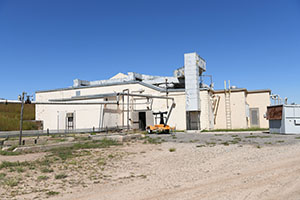
Old HE Building, 11-14

